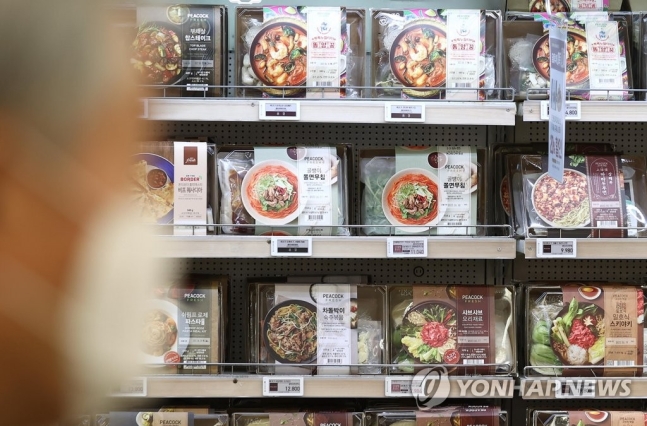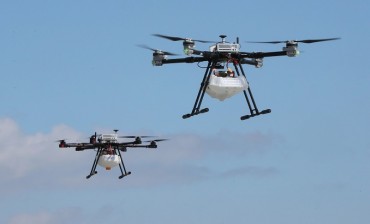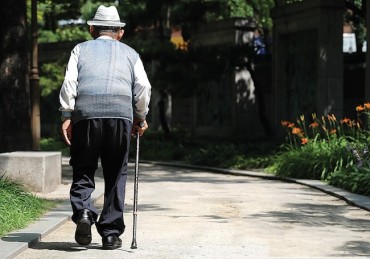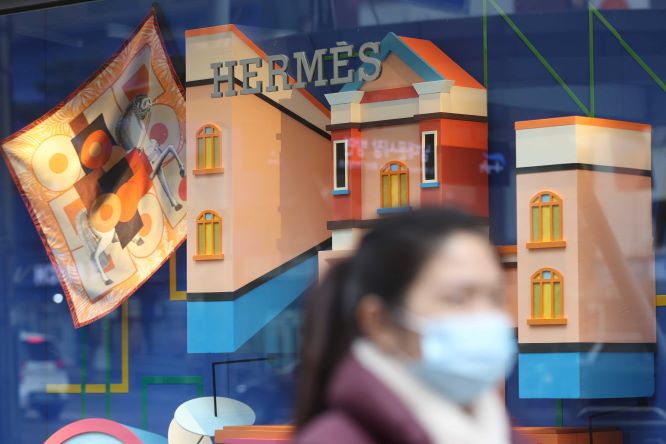
International luxury brands are once again raising prices on their products. According to retailers, Hermès raised the price of its footwear products on January 1. (Image courtesy of Yonhap)
SEOUL, Dec. 28 (Korea Bizwire) – In the face of persistent high inflation and interest rates, South Korean consumers have been navigating the economic landscape with markedly polarized spending habits.
This trend, underscored by recent studies from Lotte Home Shopping and WiseApp, reveals a complex interplay of ‘value-seeking consumption’ and ‘revenge spending’, shaping the country’s retail and technology application sectors.
Lotte Home Shopping’s data illustrates a distinct divide in consumer behavior. On one hand, there’s a surge in ‘value-seeking consumption,’ a response to the prolonged high prices. This trend is evident in the increased demand for affordable, essential items, such as bathroom products, which saw an over 80% rise in orders.
However, the average sale price of these items fell by 10%, indicating a clear preference for cost-effective solutions.
Conversely, ‘revenge spending’ is manifesting in the pursuit of premium products and experiences. In a striking contrast, the company reported a significant uptick in consultations for overseas travel, which more than doubled compared to last year.
Additionally, orders for high-end products priced over 500,000 won saw a 30% increase. This behavior reflects a pent-up demand for luxury and high-quality experiences, as daily life resumes post-pandemic.
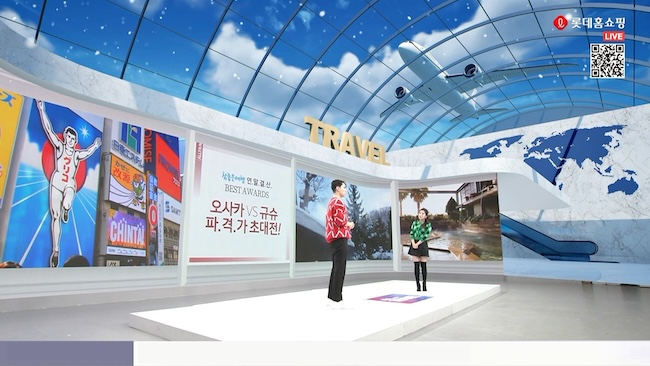
A complex interplay of ‘value-seeking consumption’ and ‘revenge spending’. (Image courtesy of Lotte Home Shopping)
Park Jae-hong, the head of the merchandise division at Lotte Home Shopping, pointed out the ‘missing middle’ phenomenon, where consumer spending concentrates at the extremes of the spectrum – either on premium or value products.
This polarization, he notes, is a direct consequence of ongoing economic challenges and is expected to persist.
Complementing the retail data, WiseApp’s analysis provides insights into the digital behavior of consumers under economic strain. The company’s study shows a marked increase in the use of ‘frugal tech’ applications, blending frugality with personal finance management.
The user base for the top five reward and app-tech applications climbed to 10.22 million as of October, a 21.5% jump from last year.
The demographic shift in app usage is particularly telling. While younger age groups – teenagers and people in their 20s and 30s – have shown a decrease in app-tech usage since 2019, the older demographics – those in their 40s, 50s and over 60 – are increasingly turning to these applications.
In 2023, the highest user share of these frugal tech apps was among people in their forties, indicating a broader acceptance and reliance on technology for managing personal finances.
WiseApp interprets this shift as an indication that app-tech and reward-based applications are becoming a mainstay in consumer behavior, especially in a high inflation and interest rate environment.
These trends point to a nuanced understanding of the South Korean consumer psyche. The economic pressures have not only spurred a bifurcation in spending habits but also fostered a new type of consumer – the ‘ambivalent shopper.’
This shopper exhibits a dual tendency: seeking value in everyday purchases while not shying away from splurging on luxury or high-value items when the situation allows.
The popularity of overseas travel destinations like Japan and Europe, with a focus on business class flights and premium hotels, juxtaposes with the increasing demand for value brands in fashion, offering reasonably priced yet diverse options.
Similarly, in the food sector, the high cost of dining out and delivery services has led to a 60% increase in processed food orders. In parallel, there’s a notable interest in stocking up on essential goods, with consumers often opting for products offering free trials or those available in bulk quantities.
Looking ahead, experts anticipate that these polarized consumption patterns will continue. Park Jae-hong from Lotte Home Shopping suggests that in response to the ‘missing middle’ phenomenon, retailers and service providers will increasingly focus on catering to both ends of the spectrum.
This involves a strategic approach to product and service offerings, balancing between premium international brands and cost-effective, value-oriented products.
Meanwhile, the rise in frugal tech app usage underscores a broader shift in consumer behavior, as South Koreans adapt to economic challenges by integrating technology into their financial planning and spending strategies.
This trend, reflective of a broader global movement towards digital financial management, is likely to expand, driven by both necessity and a growing comfort with technology.
J. S. Shin (js_shin@koreabizwire.com)


